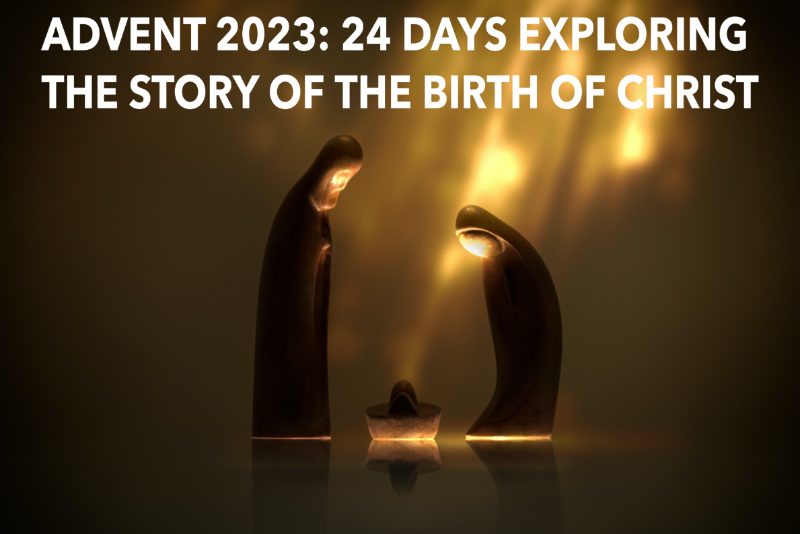
GRAPHIC: Beto Gomez/Shutterstock
In the lead-up to Christmas this year, we’re featuring 24 days exploring the Biblical story of Christ’s birth…
All Bible quotes come from the NIV unless stated otherwise.
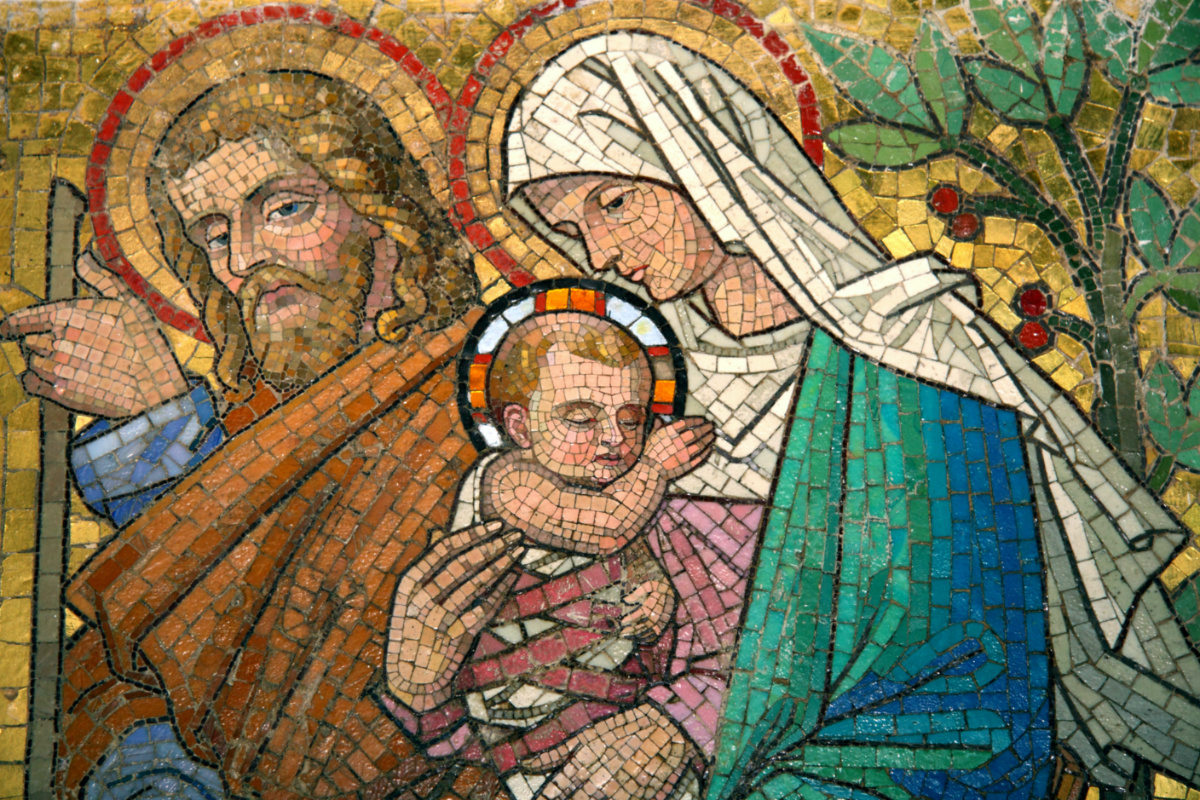
A mosaic depicting Joseph, Mary and Jesus. PICTURE: Mayerberg/iStockphoto.
DAY 24
What names are given to Jesus in the story of His birth?
Both Mary and Joseph are told by angels that they are to name the child Mary will give birth to ‘Jesus’ (Mary in the Gospel of Luke and Joseph in the Gospel of Matthew). Jesus is an English translation of the Hebrew ‘Yeshua’ (or Joshua) and means “Yahweh [God] is salvation”. Indeed, the angel who appeared in a dream to Joseph tells him that Jesus is to be so-named “because He will save his people from their sins”.
But that’s just one of the names used to describe Jesus in the accounts. Others include ‘Messiah’ and ‘Christ’ (both of which mean “anointed one” – ‘Messiah’ in Hebrew and ‘Christ’ in Greek), ‘Lord’, ‘Immanuel’ (Hebrew for “God with us”), ‘Son of the Most High’, ‘Saviour’, ‘King of the Jews’, ‘ruler’ and ‘a Nazarene’ (generally seen as a reference to His family’s humble status).
The names celebrate Jesus’ identity as the Son of God, His humanity and His purpose here on Earth.

A Christmas celebration in Crystal Cove, California. PICTURE: Mark Tierney/Shutterstock
DAY 23
Why do we celebrate Christ’s birth on 25th December?
While accounts of the birth of Jesus in the Gospel of Matthew and Gospel of Luke do not mention a specific date or particular time of year for the birth of Christ, scholars are generally in agreement that Jesus was not actually born on 25th December (or on the date some Orthodox Christians celebrate Christmas – 7th January).
Clues in the accounts – such as the involvement of the shepherds – led some to believe the birth actually took place in September or October in a year which many believe was between 6BC and 4BC (largely due to the reign of Herod).
But why was 25th December chosen for the celebration? Some believe it was because there were a couple of Roman festivals – including a celebration of the Sun known as ‘Sol Invictus’ on 25th December itself and ‘Saturnalia’, a celebration of the god Saturn, in the weeks prior – which took place around that date (and Christians wanted to replace them). But others say it’s due to the fact that 25th December is close to the winter solstice or that the day falls nine months after 25th March, traditionally held as the date of Jesus’ execution.
Whatever the reason – and it remains something of a mystery, the date seems to have been settled upon by the close of the third century.
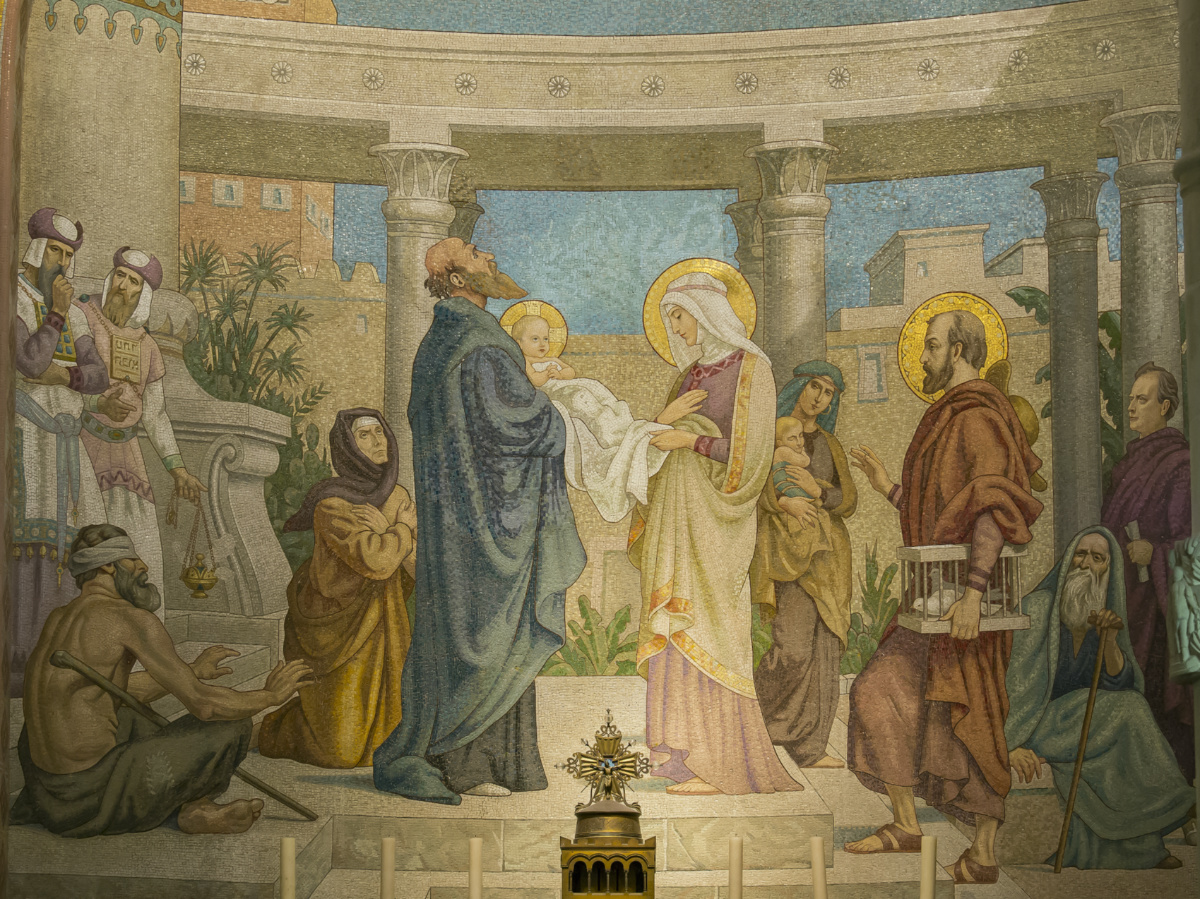
A depiction of the presentation of Jesus at the Temple at Lourdes in France. PICTURE: clamon/Shutterstock
DAY 22
When was Jesus presented at the Temple?
The Gospel of Luke records that Mary and Joseph took the infant Jesus to present Him at the Temple in Jerusalem and offered a sacrifice of a pair of doves or pigeons, as required according to Jewish custom.
Luke tells of the reaction of a “devout” man named Simeon and of an elderly widow and “prophet” called Anna, both of whom were moved to give thanks and praise God on encountering Jesus.
Jesus was believed to be just a few weeks old when this occurred – Levitcus says this should take place 40 days after the birth of a male child. The Gospel of Matthew doesn’t mention this event but it’s generally assumed that it must have taken place before the family’s flight to Egypt.
The decision to sacrifice a pair of birds instead of a lamb reflects the economic status of the couple – lambs were expensive and the sacrifice of birds was a more affordable alternative.
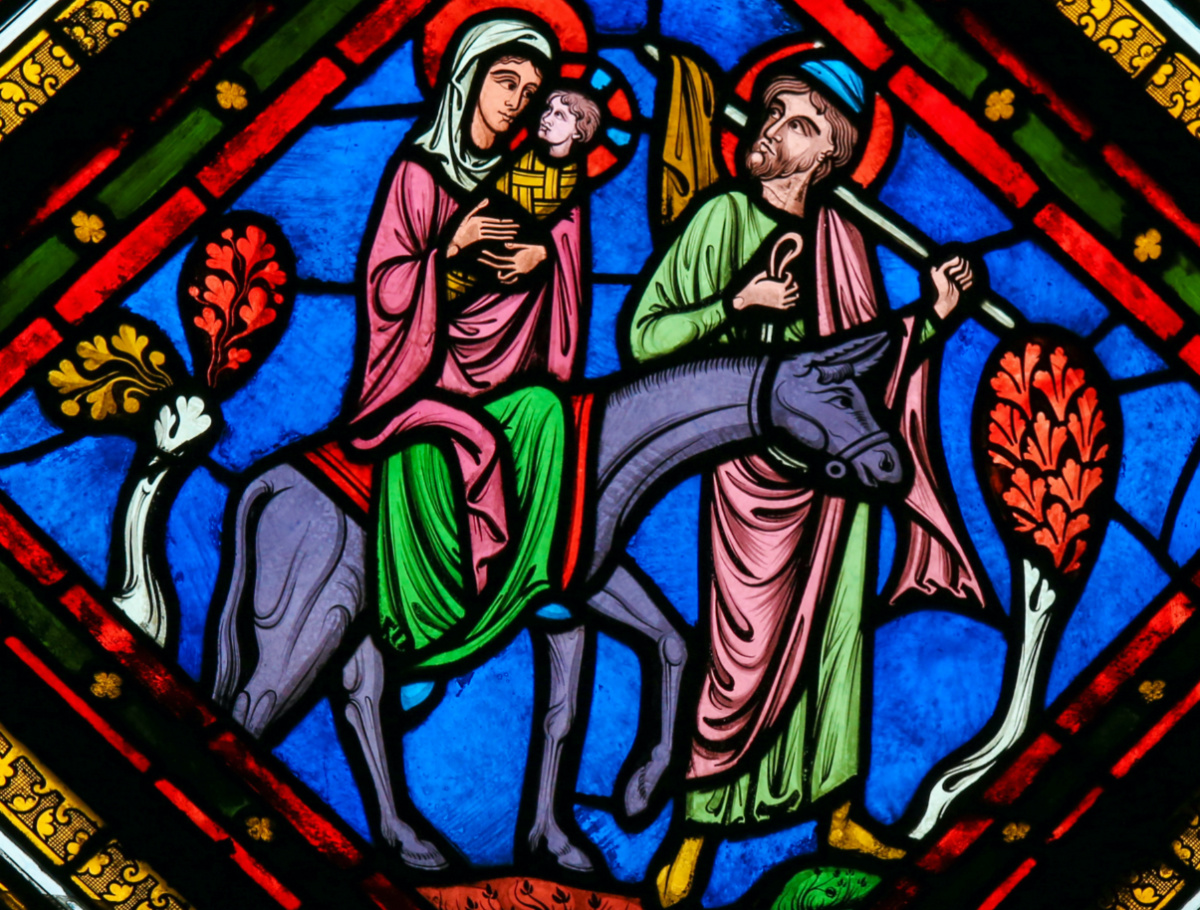
The Flight to Egypt depicted in stained glass in the Cathedral of Caen in Normandy, France. PICTURE: Jorisvo/Shutterstock
DAY 21
What was the ‘flight to Egypt’?
Matthew’s Gospel records how an angel appeared to Joseph in a dream and warned him to “take the child and his mother and escape to Egypt”, adding that they were to stay there “until I tell you, for Herod is going to search for the child to kill him.”
Joseph obeyed and took his family to Egypt and they stayed there until Herod’s death (Matthew states that this was the fulfillment of a prophetic statement made by the Prophet Hosea).
It’s not a short journey and would have taken them at least several days (and given it happened after the visit from the magi, some believe Jesus would have been a toddler at the time).
The Bible doesn’t record exactly how long the family were in Egypt – although mention of Herod’s death is a clue – and scholars differ on this point but many believe it was around three or four years (although some say it was a much shorter period – as little as a few weeks or months – and others significantly longer – up to seven years).
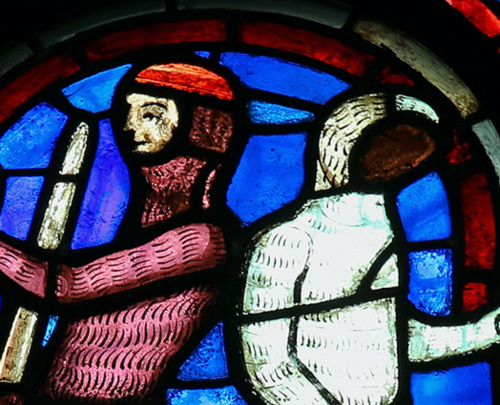
Detail from a stained glass window depicting the Massacre of the Innocents. PICTURE: Jorisvo/Shutterstock
DAY 20
What was the Massacre of the Innocents?
It’s the most tragic part of the story of the birth of Christ (and often overlooked in nativity plays).
The Gospel of Matthew records how King Herod, alarmed by the magi’s arrival in search for a newborn ‘King of the Jews’, ordered – after he realised he had been “outwitted” by the magi who had not reported back to him about where the child was located – ordered the killing of “all the boys in Bethlehem and its vicinity who were two-years-old and under”. Hence what became known as the ‘Massacre of the Innocents’.
Matthew writes that the massacre signalled the fulfilment of a prophecy voiced by the Prophet Jeremiah.
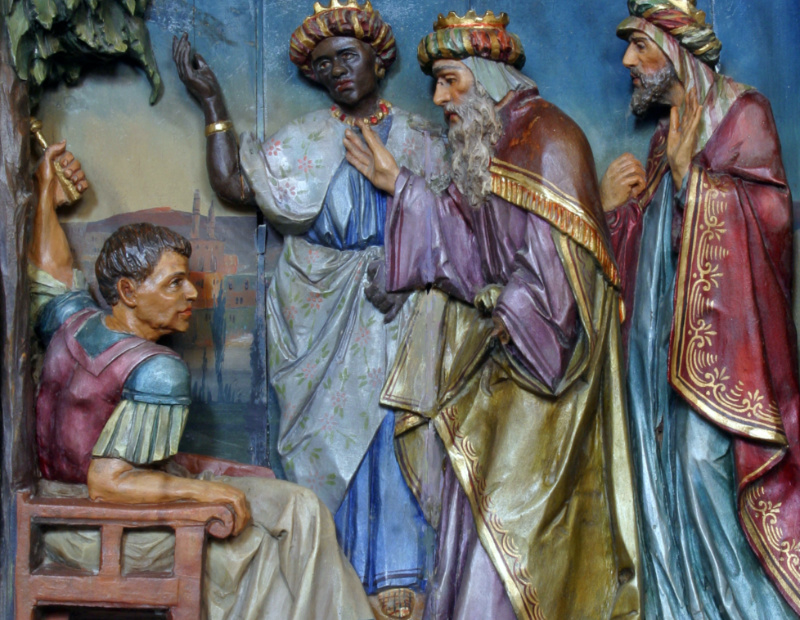
A depiction of King Herod meeting the magi. PICTURE:Zvonimir Atletic/Shutterstock
DAY 19
Who was Herod?
King Herod first appears in the story of Jesus’ birth in Matthew, chapter two, when he is visited by the magi who are looking for the “King of the Jews”. But who was he?
Herod, known to history as Herod the Great, was ruler of Judea, which contained the city of Jerusalem and Bethlehem, during the time of Chist’s birth. Judea at that time was under Roman influence and on Herod’s death, the Romans divided his kingdom among this three sons and his sister.
Scholars believe that while, as the ruler of Judea, he could be viewed as the ‘King of the Jews’ (hence his alarm at word a new king had been born), Herod may have actually come from the region of Idumea to the south and that his family had converted to Judaism.
Herod is generally viewed as a tyrant, executing his enemies and heavily taxing his subjects. He is also known to have been behind numerous major building projects during his reign, including the rebuilding and expansion of the Jewish temple complex in Jerusalem as well as the building of the mountain fortress of Masada.

Gold, frankincense and myrrh. PICTURE: Marilyna/iStockphoto
DAY 18
What do the magi’s gifts represent?
Matthew 2 records that when the magi found Jesus, they bowed down and worshipped him before then presenting him with “gifts of gold, frankincense and myrrh”. But why those gifts?
There’s many thoughts about why these gifts are presented to Christ – of course, all three are described as “treasures”, fitting presents for a King.
While some believe the three gifts represent the cultures of the three magi who give them, traditionally they have been seen as symbolic of three aspects of who Christ is: gold to represent His kingship, frankincense, an aromatic resin used in expensive perfurmes and incense, to represent His divinity, and myrrh, a resin used to make oils and which is used in embalming, as a sign of His coming sacrificial death.
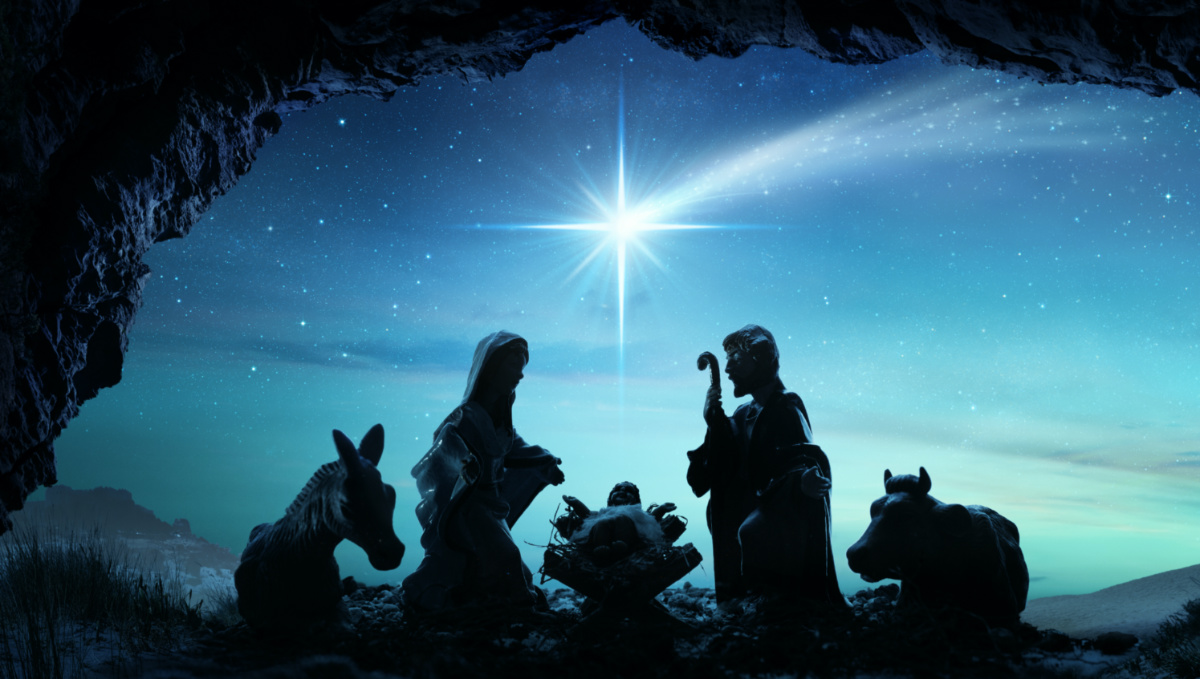
A graphic depicting the star over the holy family. PICTURE: RomoloTavani/iStockphoto
DAY 17
What role does the star play?
Sometimes referred to as the ‘Star of Bethlehem’ or the ‘Christmas Star’, the star is mentioned in chapter two of the Gospel of Matthew and plays a key role in leading the magi to the location of Jesus.
On reaching Jerusalem, the magi tell King Herod: “We saw his star when it rose and have come to worship Him.” Leaving Herod, they again see the star, “when it rose went ahead of them until it stopped over the place where the child was”.
There’s been various theories posited about which star the magi were following and some have suggested it could be a phenomena such as a supernova or a coming together of various planets and constellations. Some even believe the star was a purely supernatural phenomena.
Whatever the star was, it played a key role in guiding the magi to worship the Saviour.
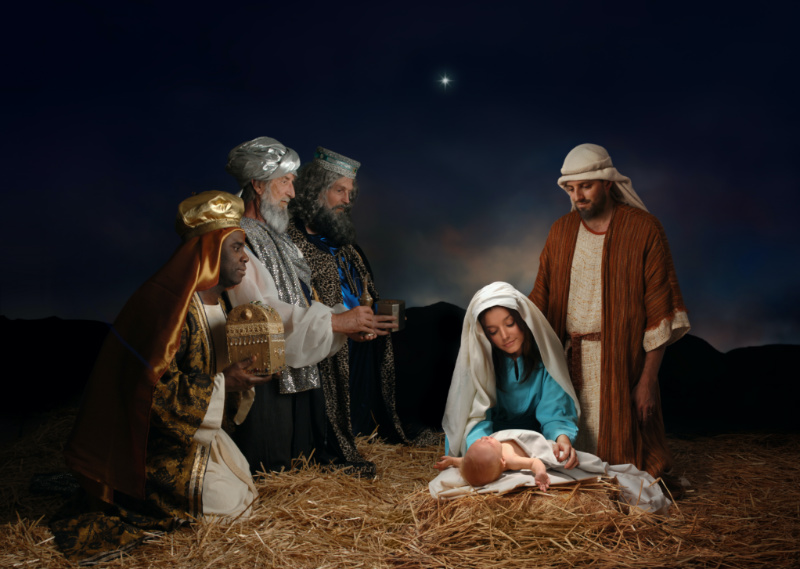
The magi depicted visiting Christ. PICTURE: jgroup/iStockphoto.
DAY 16
Who were the magi?
Sometimes referred to as ‘kings’ or ‘wise men’, the magi appear in chapter two of the Gospel of Matthew and are said to have travelled from the “east” to visit the “one who has been born king of the Jews”. This they do, after first meeting with Herod. But who exactly were they?
They answer is that we don’t really know – and interestingly we don’t even know how many there were. While the number three comes from the number of gifts they bring, some traditions hold there were as many as 12 in the group. The word ‘magi’ has been used to refer to Persian wise men who served as astrologer-priests and could interpret signs (although it’s later used in the Bible to describe someone akin to a magician or someone with supernatural ability).
Western tradition names three magi – Balthasar, Melchior, and Gaspar – and under those names, they are sometimes represented as specific kings (Balthasar as a King of Arabia or Ethiopia, Melchior as a King of Persia, and Gaspar as a King of India).
While nativity plays often show them arriving at the same time as the shepherds, Matthew’s Gospel says they came after Jesus’ birth and scholars believe that Jesus may have been one or even two-years-old by the time they arrived.
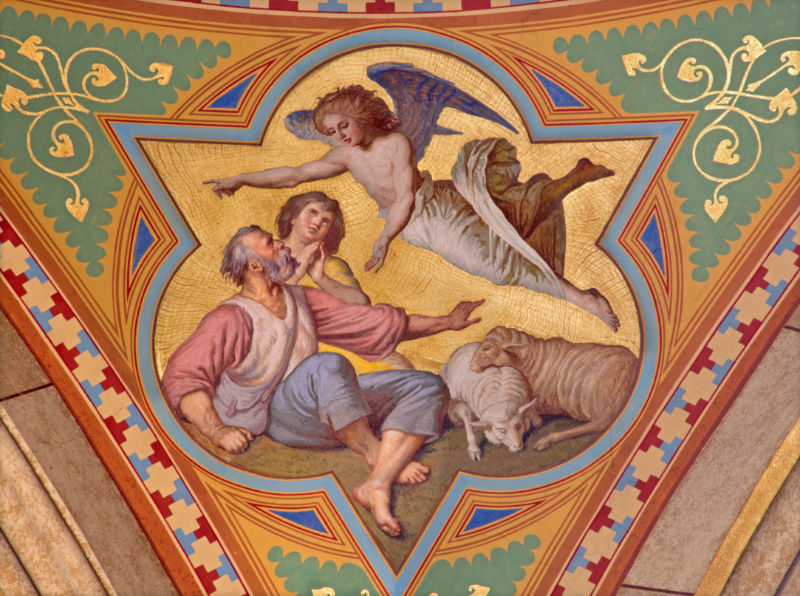
A fresco of an angel visiting the shepherds in side nave of Altlerchenfelder Church in Vienna, Austria. PICTURE: sedmak/iStockphoto
DAY 15
Who were the shepherds?
In chapter two of the Gospel of Luke, there is an account of an angel appearing to “shepherds living out in the fields” nearby Bethlehem and informing them, after first quelling their fears, that the Saviour has been born in “the town of David” and that, in a sign to them, they would “find a baby wrapped in cloths and lying in a manger”.
After the angel speaks, a great company of angels appeared and praised God. The shepherds then made their way to Bethlehem where they found Jesus before returning to their fields “glorifying and praising God for all the things they had heard and seen, which were just as they had been told”.
The shepherds – and we aren’t told how many there are or their names – were nearer to the bottom than the top of the social order at the time and their inclusion in the story of Christ’s birth is a clear statement that the Saviour has come from all, regardless of status. The first witnesses of Christ’s birth, they also played an important role in spreading the story of Jesus’ birth.
Shepherds play a prominent role in other parts of the Bible as well. King David started out as a shepherd boy and, of course, Jesus Himself is later referred to as a shepherd.
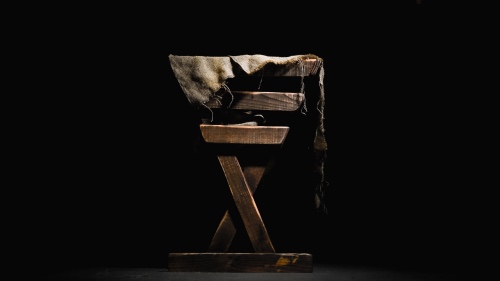
PICTURE: Greyson Joralemon/Unsplash
DAY 14
Where was Jesus born?
After Joseph and Mary arrived in Bethlehem (and were turned away from the ‘inn’ – see yesterday’s entry), the Gospel of Luke records that Mary gave birth to Jesus “wrapped him in cloths and placed Him in a manger”.
Nativity scenes typically picture this as occurring in a stable – after all, the word ‘manger’ comes from the Latin ‘manducare’, meaning ‘to eat’, and refers to a wooden or stone feeding trough which would have contained hay for larger animals (in this case used by Mary and Joseph as a crib).
It’s understood due to the presence of the manger that Jesus was born in a place where the animals were typically penned, though no animals are mentioned as being present. This is likely to have been lower rooms in a property (as opposed to the upper rooms where people stayed) and perhaps, some believe, may have even been a cave.
It’s a humble birth for the Saviour and illustrative of Jesus’ accessibility to all of us.
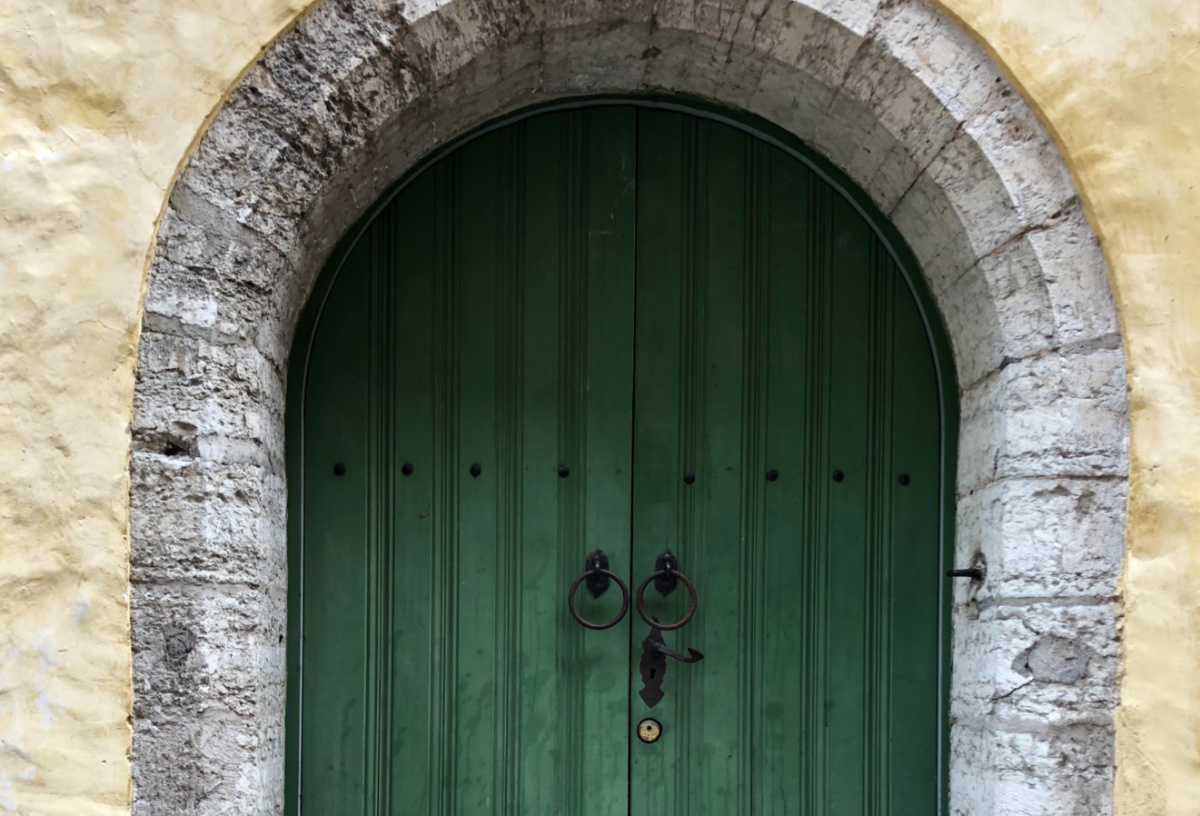
PICTURE: Karson/Unsplash
DAY 13
What was the ‘inn’ mentioned in Luke?
A line which appears in Luke chapter 2 reveals how, on reaching Bethlehem, Joseph and his pregnant wife Mary, were confronted with a lack of accommodation – “there was no guest room available for them”.
Commonly translated as “no room for them in the inn” as in the King James Version, the verse has been the subject of considerable discussion and at its centre lies the Greek word ‘kataluma’.
Some see the word as denoting an inn where travellers would stay in rooms on the upper floors while animals were stabled below. But others say it better translates as a ‘guest room’ in a private property (perhaps owned by Joseph’s relatives) which again would have been on the upper floor, that is, away from the animals.
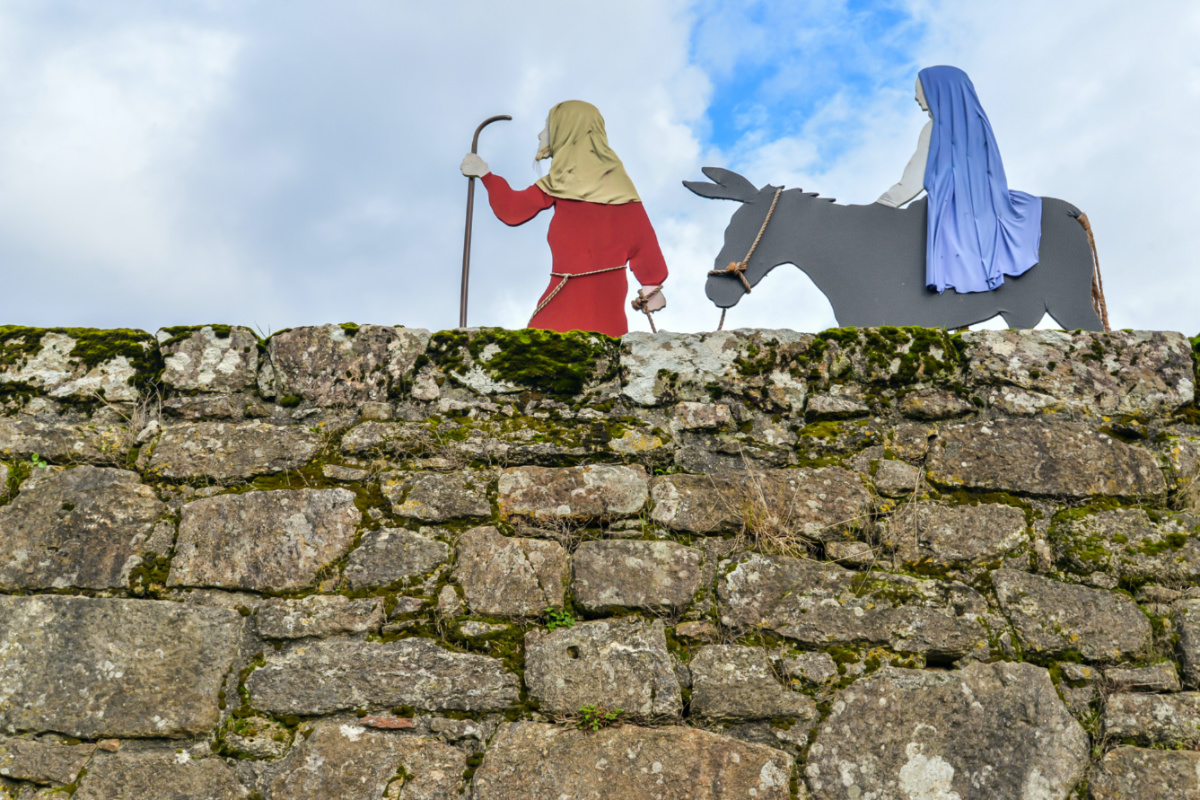
Joseph and Mary on their journey to Bethlehem with Mary depicted on a donkey in a display in the Portuguese town of Tui. PICTURE: Olivier Guiberteau/Shutterstock
DAY 12
How long did it take Mary and Joseph to travel from Nazareth to Bethlehem?
The Gospel of Luke, in chapter two, records that Mary and Joseph travelled south from Nazareth to Bethlehem where Mary, expecting a child, gave birth to Jesus. But how long did the journey take them?
While the straight-line distance between Nazareth and Bethlehem is about 110 kilometres, in Biblical times it’s estimated travellers making their way from Nazareth to Bethlehem would have had to journey about 145 kilometres, a distance which scholars say would have taken them perhaps a week to travel (some say as long as two weeks).
Interestingly, Mary is often depicted riding on a donkey. And while this was a common form of transport at the time, no mention of the donkey is made in the Biblical accounts.

Looking over Bethlehem today. PICTURE: paraphernale/iStockphoto
DAY 11
Why is Bethlehem important?
Bethlehem, which is located about 10 kilometres south of Jerusalem in the hill country of Judah, is obviously central to the story of the birth of Christ as the location where the birth actually took place. But it was also important in the Old Testament.
Bethlehem, which means ‘House of Bread’ in Hebrew, was the birthplace of King David (with whom Jesus is linked through the genealogy at the start of the Gospel of Matthew) and it was also where, as a boy, David was anointed by Samuel (the first of three times he was anointed).
Rachel, the wife of Jacob and mother of Joseph and Benjamin, was also buried just outside Bethlehem.
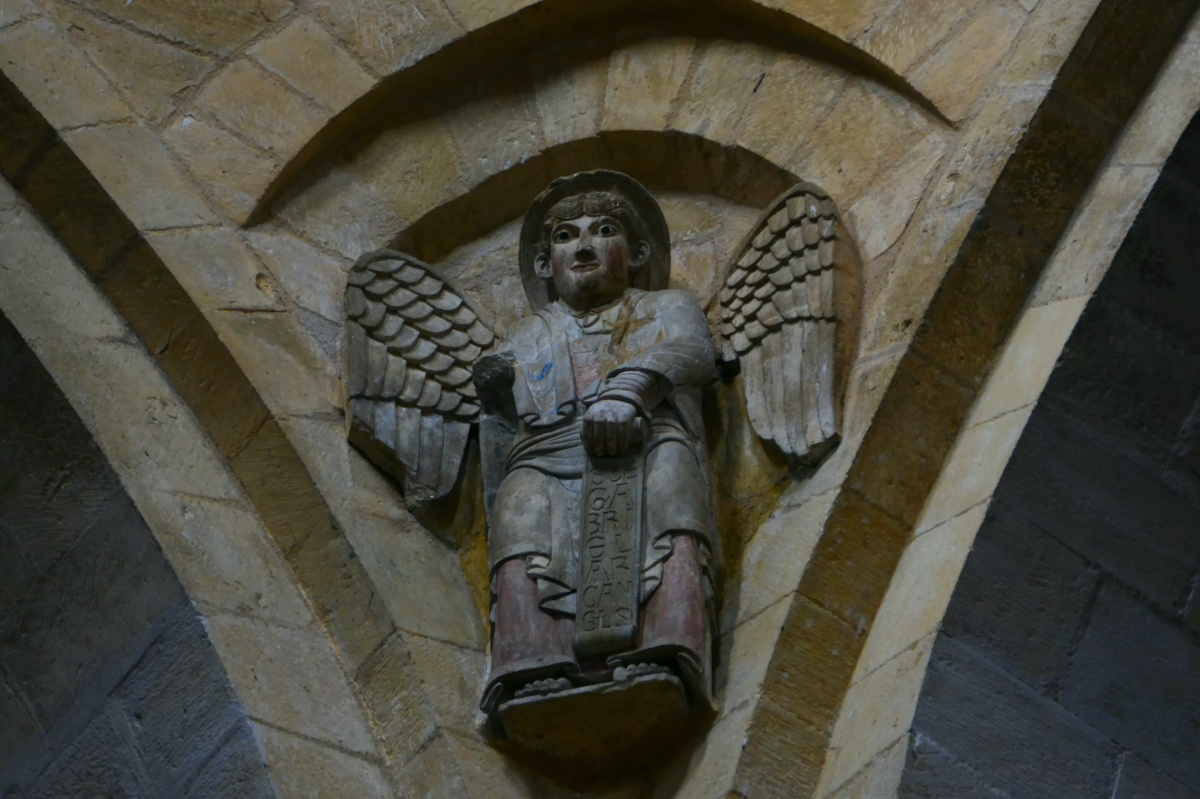
A depiction of the angel Gabriel in the Abbey Church of Sainte–Foy in Conques, France. PICTURE: Yvan Tessier/iStockphoto
DAY 10
Who is Gabriel?
As mentioned yesterday, Gabriel is the only angel named in the story of Jesus’s birth. He is recorded as appeared to both Mary and Zechariah (in Luke). But those aren’t the only mentions of Gabriel in the Bible.
Gabriel, whose name means ‘God is my strength’ in Hebrew, also appears (repeatedly) to the prophet Daniel in the Old Testament book of the same name.
Gabriel is only one of two named angels in the Protestant Bible – the other being Michael, who is named in the Book of Revelation, the Epistle of Jude and in the Old Testament Book of Daniel.
Gabriel is often referred to as an archangel. While Michael is referred to as an archangel in the Protestant Bible (in the Epistle of Jude), Gabriel is not – the reference to him as such comes from the apocryphal Book of Enoch in a list of seven archangels.
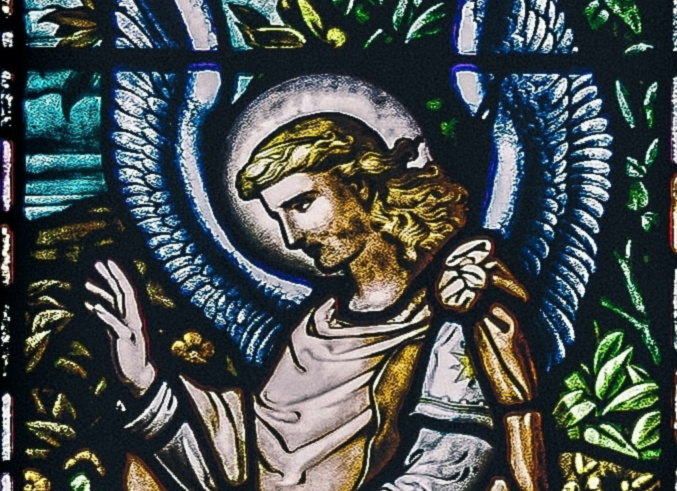
An angel depicted in St Columb’s Cathedral, Londonderry, Northern Ireland. PICTURE:
K Mitch Hodge/Unsplash
DAY 9
What role do angels play in the Christmas story?
Angels appear several times in the Christmas story.
In the Gospel of Luke, an angel named as Gabriel (more on Gabriel tomorrow) appears to Mary and tells her she will conceive and give birth to a son she is to call Jesus. Earlier, Gabriel also appears to the priest Zechariah while he is at the Temple and tells him his wife Elizabeth will bear a son they are to call John. An angel also appears to the shepherds in fields near Bethlehem and tells them of the birth of the Saviour (the angel is then briefly accompanied by a “heavenly host” who praise God before departing into Heaven).
In the Gospel of Matthew, meanwhile, an angel appears to Joseph in a dream and tells him not to be afraid to take Mary as his wife “because what is conceived in her is from the Hoy Spirit”. An angel also later appears to Joseph in a dream after Jesus is born, warning him to take his family and flee to Egypt to escape Herod (they return after an angel again appears to Joseph in another dream while in Egypt and tells them it’s safe to do so).
Angels in the story take on the role of messengers of God (indeed the word ‘angel’ derives from Greek for ‘messenger’) or heralds of the good news of Jesus’ birth. The Bible tells us elsewhere that angels are beings created by God. In Hebrews, they are described as “ministering spirits sent to serve those who will inherit salvation”. Angels appear in numerous places in the Bible, from Genesis through to Revelation.
In the story of Christ’s birth, the appearance of angels highlights the significance of the unfolding events, underlining the supernatural, miraculous and cosmic nature of what’s taking place.
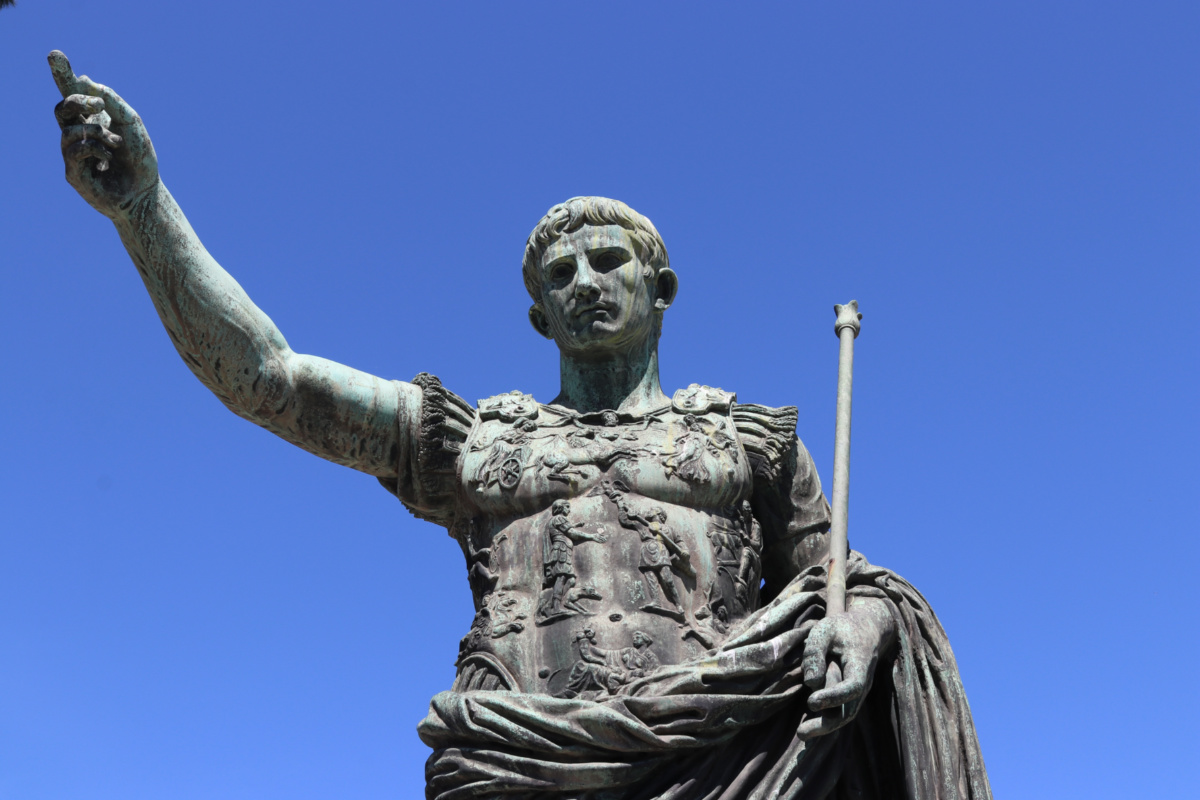
A statue of the Emperor Augustus. PICTURE: Clemens van Lay/Unsplash
DAY 8
What role does the Roman census play in the story of Christ’s birth?
Luke starts what is now the second chapter of his account of the birth of Jesus by mentioning that Caesar Augustus had issued a decree that a census should be taken of the entire Roman world. He adds futher that it was the “first census that took place while Quirinius was governor of Syria” and that it meant everyone went to their own town to register (hence requiring Joseph and Mary to travel to Bethlehem where Jesus is then born).
There is some considerable scholarly dispute and debate over Luke’s account, in particular how it fits with Matthew’s account with regard to dates (Matthew doesn’t mention the census). But we do know that the Caesar Augustus he refers to is the Roman Emperor Augustus, the adopted son – and successor – of Julius Caesar and the first Roman emperor who ruled until 14AD. It’s also known that Quirinius was a Roman governor around that era (although there’s questions surrounding the dates) and that Roman censuses were generally carried out for taxation purposes (although, again, there are questions about this particular census and its operation).
There’s certainly too much to fully explore here but suffice to say that what appears to be a simple statement setting the scene for why Christ was born in Bethlehem brings with it considerable historical controversy.
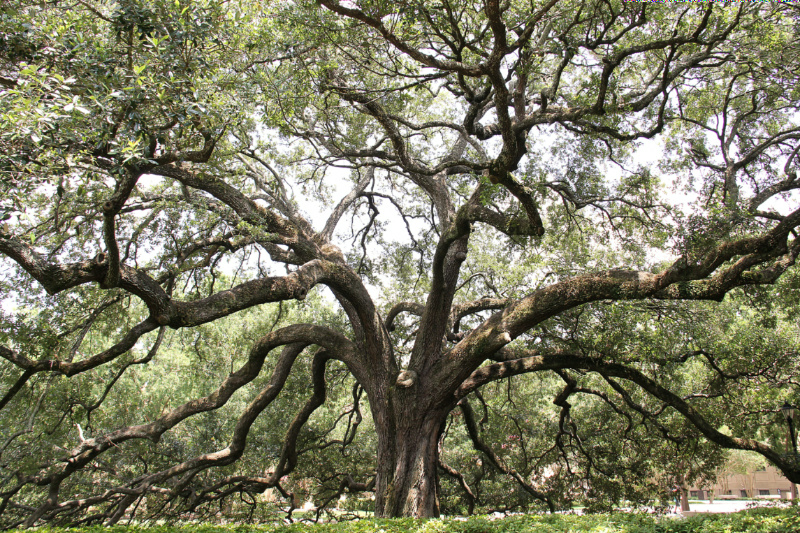
PICTURE: aalex81/iStockphoto
DAY 7
Why does Matthew include a genealogy before telling the story of Christ’s birth and who is included?
The genealogy of Jesus at the beginning of Matthew – immediately before the story of the birth of Christ – not only provides a link between the Old Testament and New Testament but also, according to The Bible Project, points to Jesus’ “identity and mission”.
In it, Jesus is connected to both the key Old Testament figures of Abraham and King David. But Matthew also mentions less likely figures such as Rahab – the Canaanite prostitute who helped Joshua’s spies, and Ruth, a Moabite woman, whose stories speak of a faithful God and of the power of redemption for all, no matter our past.
Matthew, in including this genealogy, positions the birth of Jesus firmly at the centre of the Biblical story of God’s plans for mankind.
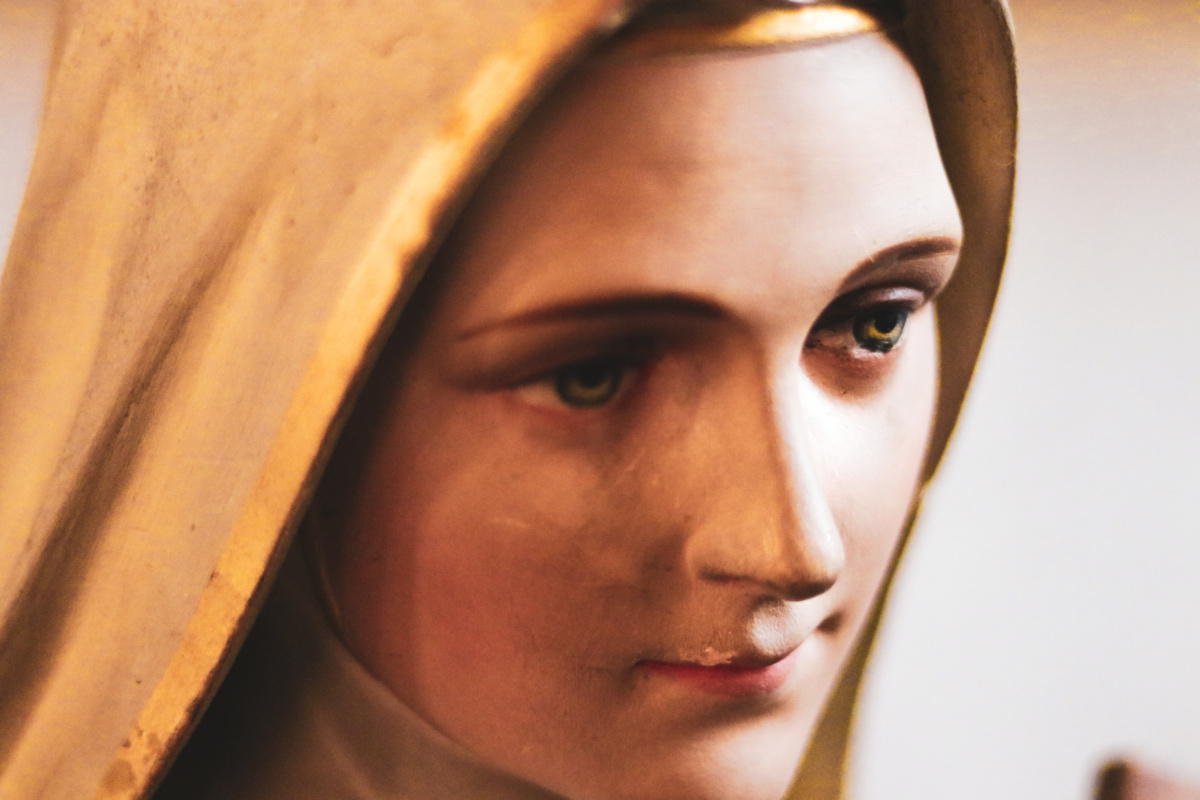
A statue depicting Mary. PICTURE: DDP/Unsplash
DAY 6
What is the Magnificat?
As mentioned yesterday, the Magnificat is a name given to the song or poem Mary recites (or sang) in the Gospel of Luke in response to a blessing given to her by her relative Elizabeth upon their meeting. The name simply comes from the Latin word which begins the poem and simply means ‘magnify’ or ‘glorify’.
The poetic statement, which runs for 10 verses, can be seen as a song of praise to God in which Mary extols Him for being “mindful of the humble state of his servant” and praises His mercy, mighty deeds and faithfulness. It emphasies God’s help for the humble, the hungry and those in need (including Mary herself).
The Magnificat is sung in many Christian traditions, particularly during Advent.
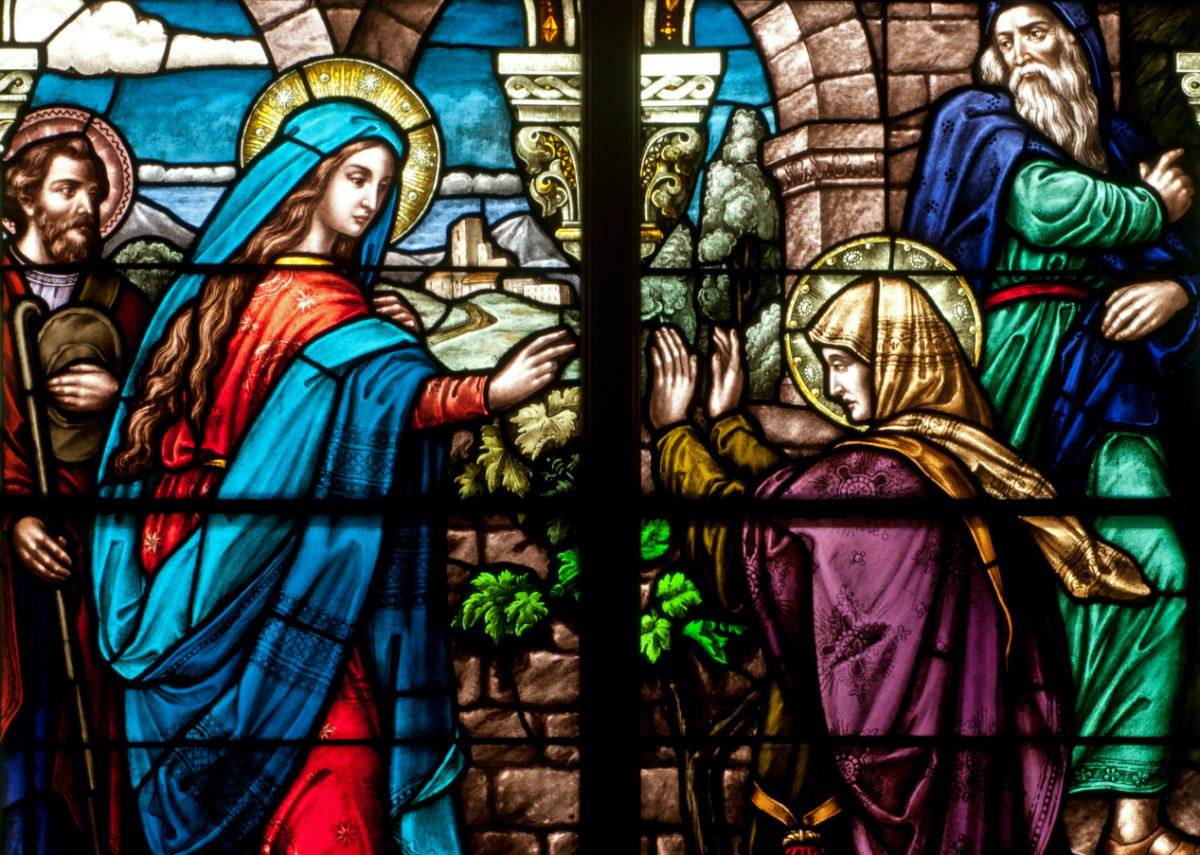
A stained glass window depicting the scene of Mary visiting Elizabeth. PICTURE: Nancy Bauer/Shutterstock
DAY 5
Who are Elizabeth and Zechariah?
The Gospel of Luke starts its account of the story of the birth of Christ by telling the story of Zechariah, a priest, and his wife Elizabeth, who live in the hill country of Judea. They were childless and both very old when an angel appeared to Zechariah while he was at the Temple and informed him they would have a son they were to call John (who becomes known later as John the Baptist). Zechariah, who had asked the angel how this was possible given their age, was struck dumb until John’s birth.
Elizabeth is sixth months pregnant when her relative (sometimes called a cousin) Mary becomes pregnant with Jesus and goes to stay with the couple. It’s noted that as Mary arrived and called out a greeting, Elizabeth’s baby leapt in her womb and she was filled with the Holy Spirit, exclaiming in a loud voice that Mary was “blessed among women”. Mary response is sometimes known as the Magnificat.
The Gospel of Matthew records that Mary stayed with Elizabeth for three months before returning to her home in Nazareth. It also records the subsequent birth of John, a child who “grew and became strong in spirit” and who “lived in the wilderness until he appeared publicly to Israel”.
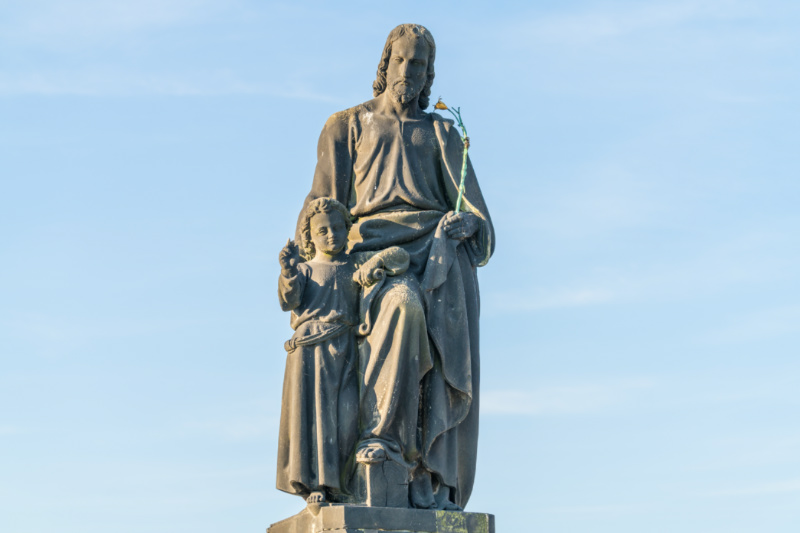
A statue of Joseph with a young Jesus in Prague, Czech Republic. PICTURE: Pajor Pawel/Shutterstock
DAY 4
Who was Joseph?
Joseph, the husband of Mary, is described in the Gospel of Matthew as a man who was “faithful to Law” who had, when he found out that Mary was pregnant, considered divorcing her quietly but changed his mind after an angel appeared to him in a dream and told him not to be afraid to take Mary as his wife. It was also Joseph who named Jesus, again on the angel’s instructions.
Joseph was a descendant of King David and the Gospel of Luke records that it was because of this, he and the heavily pregnant Mary had to make their way to Bethlehem – the town of David – for the Roman census.
Later in Matthew (and also in the Gospel of Mark), Joseph is described as a carpenter – it occurs when Jesus is described as “the carpenter’s son” while visiting Nazareth – but some scholars say the word translated as carpenter may actually mean simply a craftsman or possibly even a stone mason.
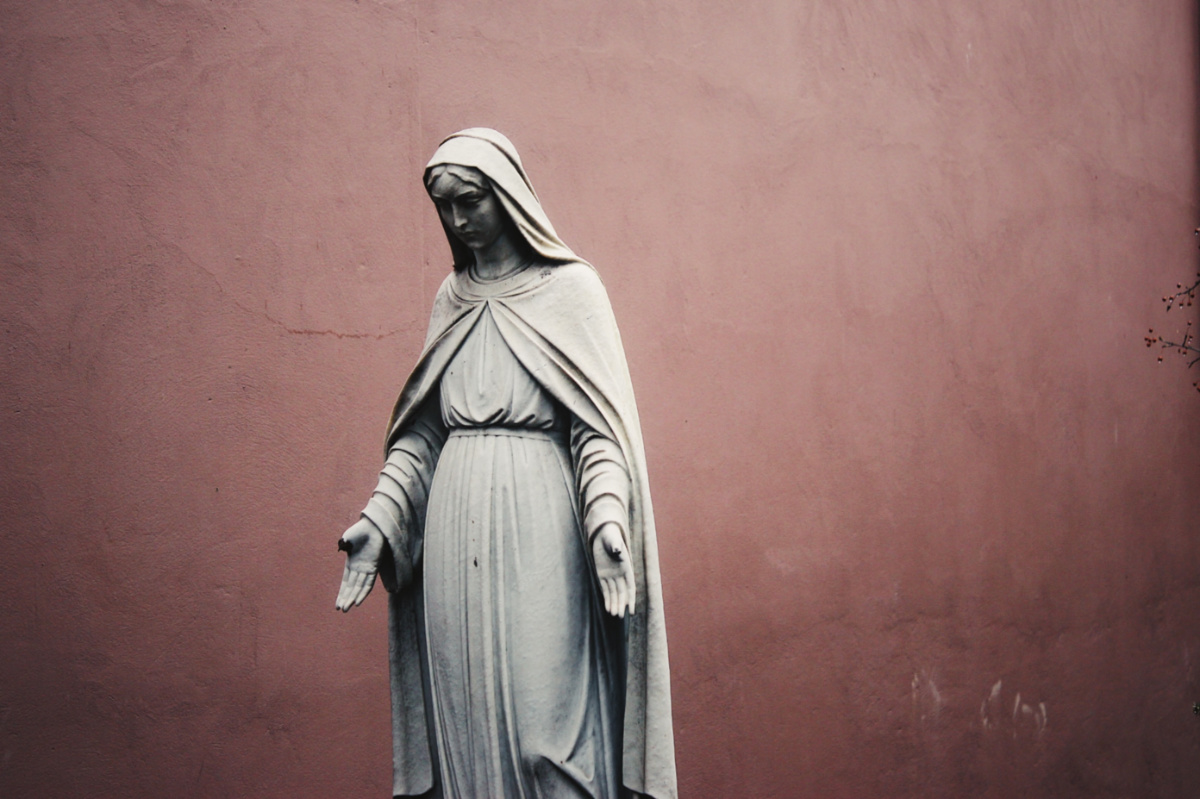
PICTURE: Jon Tyson/Unsplash
DAY 3
Who was Mary?
The Bible tells us that Mary, who lived in Nazareth, was pledged to be married to Joseph when the story begins and later married him (the Gospel of Matthew records that Joseph, who had planned to divorce her after finding out she was pregnant, “took Mary home as his wife” after an angel appeared to him in a dream).
Scholars suggest that based on traditions at the time, Mary was probably aged around 12 to 16-years-old at the start of the story.
While not mentioned in the Bible, tradition holds that her parents were named Joachim and Anne.
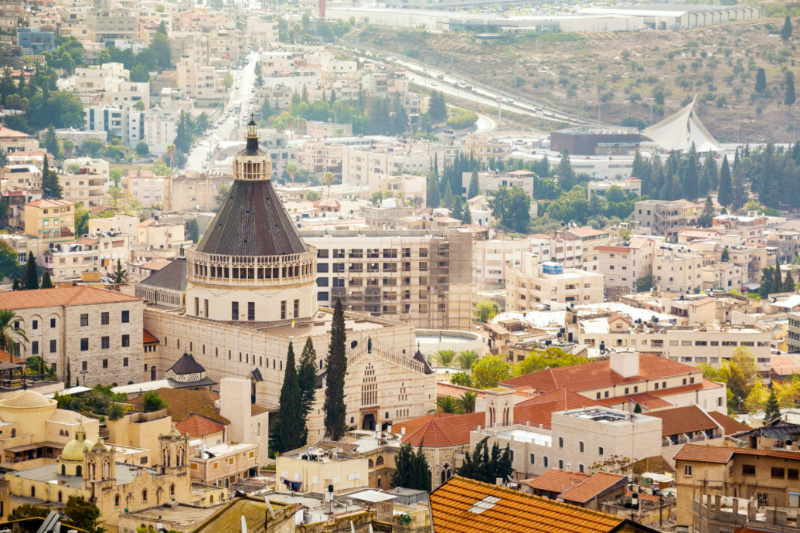
Nazareth as it is today with the Basilica of the Annunciation in the foreground. PICTURE: Sopotnicki/Shutterstock
DAY 2
Why is Nazareth significant?
The Gospel of Luke records that Mary lived in Nazareth, a town in southern Galilee. It was there that what’s known as the Annunciation – when the angel Gabriel appeared to Mary and informed her that she would give birth to Jesus – took place.
We know from the Gospel of Matthew, that Nazareth was where Joseph, Mary and the child Jesus settled after their return from Egypt. Later on in the Bible, Jesus is referred to as ‘Jesus of Nazareth’ or, as it’s recorded in some translations, ‘Jesus the Nazarene’.
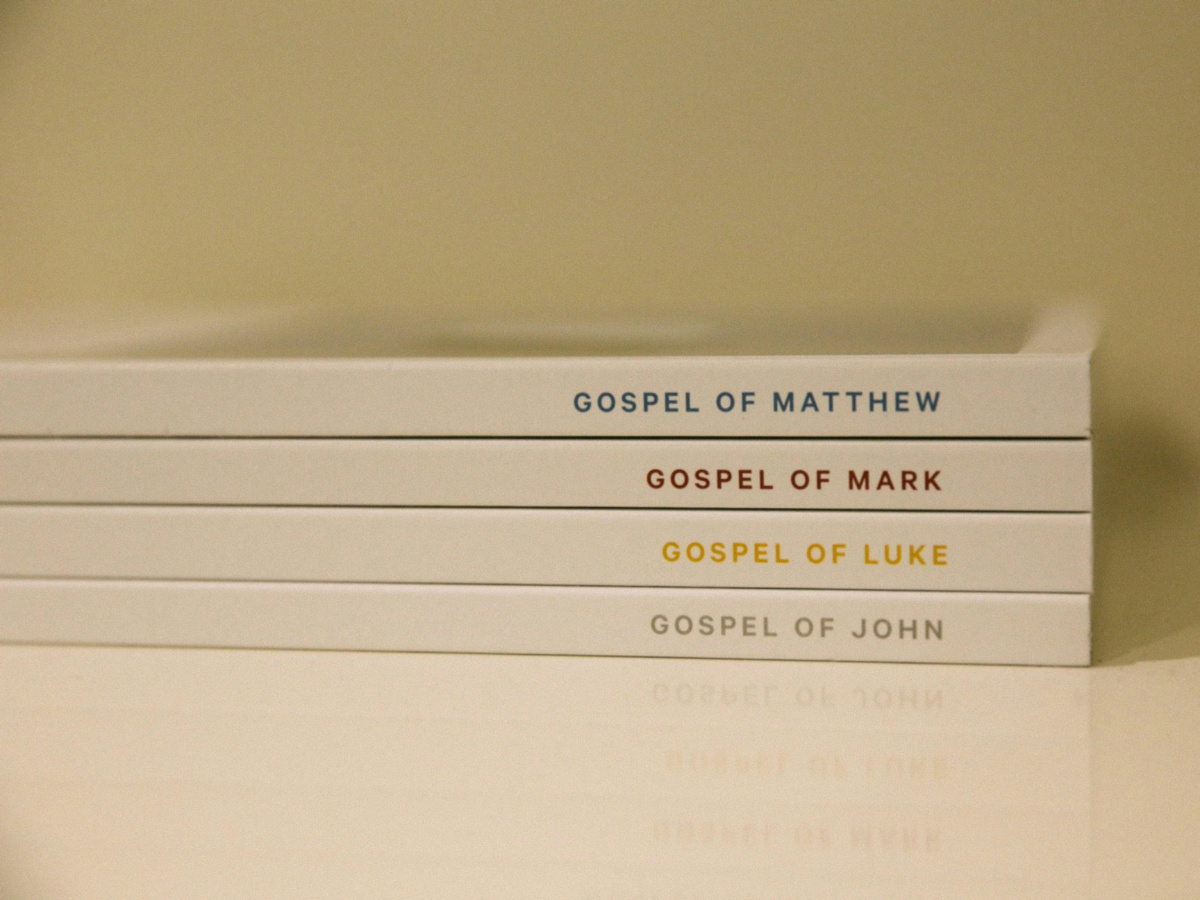
DAY 1
Where is the Christmas story recorded?
The account of the story of Christ’s birth, also known as the ‘nativity’, can only be found in two of the four Gospels – that of Matthew, chapters one and two, and in Luke, chapters one and two. And both of the accounts mention events not found in the other (more on that in future posts).
Interestingly, the word ‘nativity’ is itself not found in the Bible. The Merriam-Webster Dictionary says it comes from the Latin ‘nāscī’, which means “to be born” and, having first appeared in Anglo-French as ‘nativité’, only entered the English language in the 14th century.






